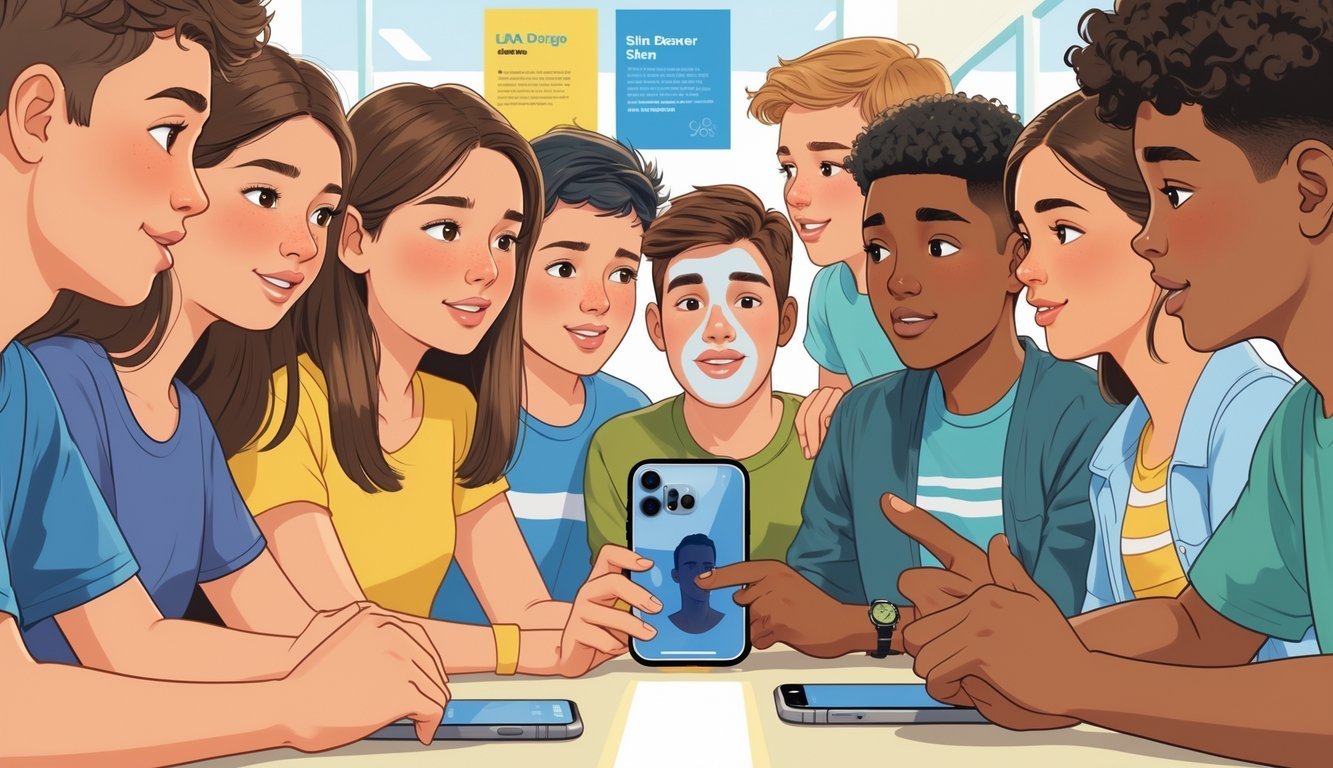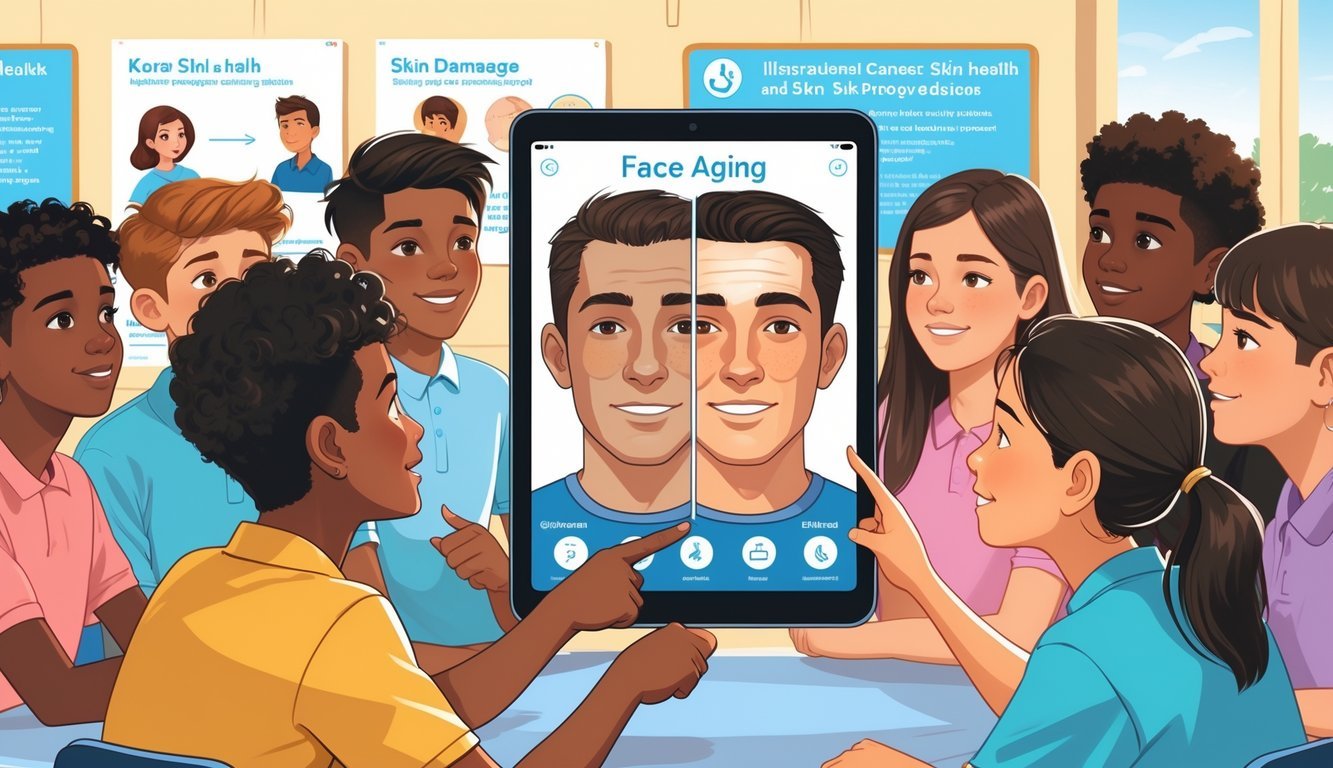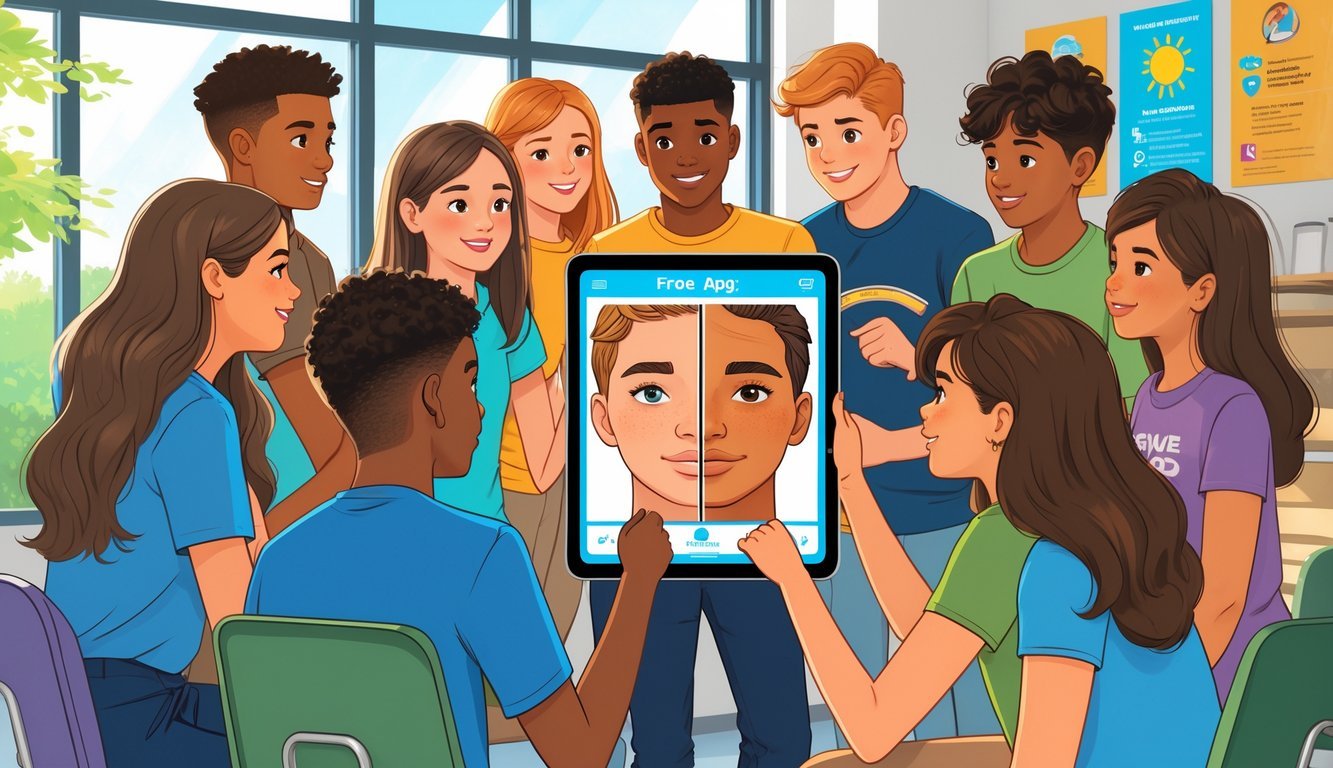Physical Address
304 North Cardinal St.
Dorchester Center, MA 02124
Physical Address
304 North Cardinal St.
Dorchester Center, MA 02124
A face-aging app helps teenagers visualize the long-term effects of sun exposure, promoting sunscreen use and awareness of skin cancer through personalized visual feedback.


Most teenagers shrug off the long-term effects of sun exposure, but a new study is turning that around with a surprisingly clever tool.
Researchers rolled out a face-aging app that lets teens see what their skin could look like down the road if they skip out on sun protection.
This app puts the consequences of UV rays right on their own faces, which makes sunscreen and sun safety a lot harder to ignore.
Here’s how it works: you snap a selfie, and the app ages your face to show wrinkles, spots, and other changes from sun damage.
It throws in some solid tips on keeping your skin safe and what warning signs to watch for.
This super visual approach nudges teens toward smarter choices, and honestly, it’s pretty effective.
If you’re curious about how tech can fight skin cancer and help people build better habits, this study brings a fresh way to see the risks and start making changes now.


In this study, researchers used a smartphone app to show how UV light changes your skin over time.
The app helps you see the risks by highlighting wrinkles and spots.
The main goal is to get you thinking about protecting your skin and checking it regularly for early signs of skin cancer.
Researchers tested a free face-aging app called Sunface with Brazilian teens.
The app showed teens how their faces might age from sun damage.
Seeing their own faces aged by UV damage really made a lot of them reconsider their sunscreen habits.
The app also teaches you how to do skin self-exams, which can help you spot melanoma early.
This kind of personal education can lower your risk by encouraging safer sun habits.
You take a selfie, and the app transforms your face to show premature aging, wrinkles, and sunspots from UV exposure.
It lets you see different future effects depending on how well you protect your skin.
You’ll get tips for better protection and learn about the ABCDE rule for checking moles—looking for asymmetry, border changes, color shifts, and more.
The app’s visuals hit home by connecting sun damage directly to your own face.

Using your own face really drives the message home.
Instead of generic warnings, the app gives you a personal preview of what UV damage could look like.
This makes it way more likely you’ll actually use sunscreen and dodge risky sun exposure.
Personalized images also push you to check your skin more often.
When you see what sun can do, you’re more likely to look for early signs of trouble.
It fits right in with how teens already use their phones and apps all the time.

Taking care of your skin now can save you a lot of trouble later.
Understanding why sun protection matters, the dangers of tanning, how to pick sunscreen, and how to enjoy the sun safely will help you make smarter choices.
Every time you step outside, your skin gets hit with ultraviolet (UV) rays.
Even on cloudy or cool days, UV rays can sneak through and cause damage.
Protecting your skin lowers your risk of sunburn and long-term problems like squamous cell carcinoma, a common skin cancer.
Sun protection isn’t just about dodging sunburn.
UV rays can also weaken your immune system and cause early aging.
Using broad-spectrum sunscreen shields you from both UVA and UVB rays, offering stronger protection.
Adding hats, sunglasses, and sticking to the shade—especially between 10 a.m. and 4 p.m.—gives you extra backup.
These small habits can really add up.
When you tan, your skin is actually trying to defend itself from UV damage by making more pigment.
But honestly, tanning means your skin is already getting hurt.
Tanning beds and indoor tanning crank out strong UV rays that can speed up skin damage.
Teens who use tanning beds raise their risk of melanoma, which is the deadliest type of skin cancer.
UV rays can leave you with painful sunburns and mess with your skin cells’ DNA.
Over time, this damage builds up and can lead to cancer.
Social media sometimes makes tanning look cool, but it’s worth thinking twice about what’s actually healthy for your skin.
Sunscreen is basically your skin’s shield against UV rays.
Go for a broad-spectrum sunscreen with at least SPF 30—it blocks about 97% of UVB rays.
Slather it on 15 to 30 minutes before you head outside.
Don’t skip spots like your ears, neck, or the tops of your feet.
Reapply every two hours, or sooner if you’re swimming or sweating.
Some sunscreens are water-resistant, which is handy if you’re active outdoors.
Always check the label to find what works for you.
Using sunscreen daily, even when it’s cloudy, helps protect your skin and can prevent bigger problems down the line.
If you want that tanned look without the risk, try sunless tanning products like lotions or sprays.
They give you color without any UV exposure.
Hanging out in the shade and wearing light, long sleeves can help you stay safe during outdoor fun.
Wide-brimmed hats protect your face and neck, too.
Honestly, your skin looks its best when it’s healthy.
Good habits now keep your skin stronger and smoother as you get older.
Sun safety doesn’t mean missing out on fun—it just means being smart about how you enjoy the outdoors.

You can see how technology helps teens spot the effects of sun damage over time.
There are plenty of ways to teach sun safety and try out new tools that encourage healthy habits.
Understanding these options gives you a better shot at protecting yourself or others from skin cancer.
Face aging apps show what your skin could look like after years in the sun.
You get to see the possible damage before it actually happens.
They also teach you what warning signs to look for that might point to skin cancer.
Interactive tools like apps and videos keep things interesting.
Real images and clear tips make it easier to remember how to stay safe.
Hands-on activities, like checking your own skin, help you learn even more.
Absolutely.
Mobile apps that age your photo to show sun damage are catching on.
These tools make learning personal and visual, and often include reminders and daily sun safety tips.
Researchers have rolled out photoaging apps in schools.
These apps help teens understand the risks of sun exposure and encourage regular skin checks.
Studies show they can boost sunscreen use and help teens avoid dangerous sun habits.
Apps can point out changes in your skin but can’t replace a doctor.
They help you spot warning signs like weird shapes or colors on moles.
For anything serious, you should still go see a dermatologist.
Let’s be honest—technology just pulls you in more than a standard lecture ever could.
You can actually interact with the material and watch how it plays out in real life.
Apps make lessons feel more useful and, honestly, a bit more fun.
They help you pick up habits that keep your skin safe over time.
